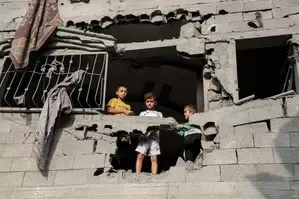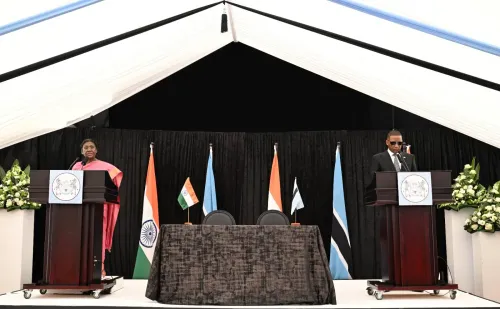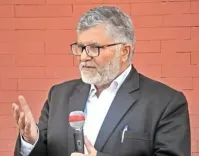Are the Last Lifelines in Gaza Collapsing?

Synopsis
Key Takeaways
- UN humanitarian officials warn of a critical situation in Gaza.
- Destruction of aid depots and targeting of relief workers.
- Hospitals are overwhelmed with patients suffering from malnutrition.
- 88% of Gaza is under displacement orders or within militarized zones.
- The need for urgent international intervention is critical.
United Nations, July 23 (NationPress) UN humanitarian officials have raised alarms regarding the deteriorating situation in Gaza, labeling it as the collapse of the last lifelines that sustain the population.
Reports indicate that amidst ongoing hostilities, UN aid depots have been devastated, residences of relief workers targeted, and those in search of food have faced gunfire. Disturbingly, accounts have emerged of starving individuals collapsing in the streets, according to Xinhua news agency.
Local health authorities disclosed that within the last 24 hours, over a dozen children and adults have succumbed to hunger. Hospitals are inundated with patients suffering from severe malnutrition, as stated by the UN Office for the Coordination of Humanitarian Affairs (OCHA).
This situation is compounded by ongoing reports of individuals being shot, killed, or injured while attempting to secure food—food that is being permitted into Gaza in quantities woefully inadequate to meet the needs of the population, OCHA noted.
The office has indicated that local hospitals are overwhelmed, with some facilities facing critical shortages of intravenous fluids. Due to fuel shortages, both the Nasser Medical Complex and the oxygen unit that supplies hospitals in southern Gaza are on the brink of shutdown.
UN facilities in Deir al-Balah have also been attacked, despite their coordinates being shared with relevant conflict parties, according to humanitarian sources.
The World Health Organization (WHO) mentioned that operations have been severely hampered by the destruction of a warehouse situated in the evacuation zone and an assault on a facility housing staff and their families.
This attack aligns with a broader trend of systematic destruction of health facilities, prompting the WHO to issue a strong condemnation and demand ongoing protection for its personnel, as well as the immediate release of a detained staff member.
Jorge Moreira da Silva, executive director of the United Nations Office for Project Services (UNOPS), reported that their premises in Deir al-Balah also suffered damage, losing power from both their generator and solar panels, and lacking running water. This site had previously been targeted by tank fire in March, resulting in the death of a UNOPS employee.
OCHA noted that teams tasked with monitoring population movements have been affected, making it challenging to report on families displaced from Deir al-Balah. Some have been re-displaced, while others have endured heavy bombardment and faced communication blackouts due to damaged cables.
According to OCHA, 88% of Gaza is either under displacement orders or located within Israeli militarized zones. The remaining 12% is already overcrowded and underserved.
The UN hub for humanitarian operations continues to be in Deir al-Balah, with staff deployed across numerous premises, all of which have shared coordinates with relevant conflict parties, as reported by OCHA.









